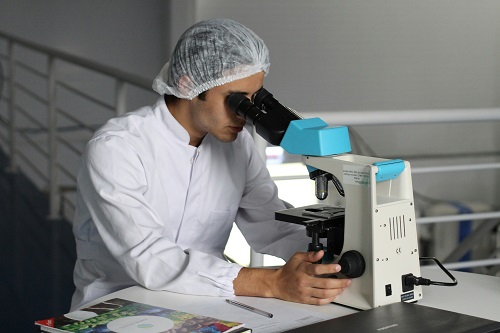Imagine tiny spheres, smaller than a red blood cell, glowing as they navigate the labyrinthine corridors of the human body. These aren’t fireflies, they’re fluorescent liposomes, a cutting-edge tool in the world of drug delivery and biomedical research.
What are liposomes?
Liposomes are microscopic bubbles made from phospholipids, the same fatty molecules that make up cell membranes. These phospholipids naturally arrange themselves in bilayers, forming a hollow sphere with an aqueous core and a hydrophobic outer shell. This structure mimics the cell membrane, allowing liposomes to seamlessly interact with cells.
Why add fluorescence?
Traditionally, tracking the journey of drugs and nanoparticles in the body has been a challenge. Fluorescent liposomes overcome this hurdle by incorporating specialized dyes into their structure. These dyes emit light when excited by specific wavelengths, allowing researchers to visualize the liposomes in real-time using fluorescence microscopy or other imaging techniques.
Benefits of fluorescent liposomes
· Real-time tracking: Researchers can observe the movement of liposomes within tissues and organs, understanding their uptake by cells, biodistribution, and potential off-target effects.
· Drug delivery optimization: By watching how liposomes interact with different cell types, scientists can fine-tune their design and targeting ligands to improve drug delivery efficiency and specificity.
· Diagnostic potential: Fluorescent liposomes can be loaded with imaging agents for specific diseases, potentially enabling non-invasive diagnosis and monitoring of various conditions.
Types of fluorescent liposomes
There are two main approaches to incorporating fluorescence into liposomes:
· Encapsulation: Fluorescent dyes can be trapped within the aqueous core of the liposome. This is suitable for hydrophilic dyes and offers a more protected environment.
· Membrane integration: Lipophilic dyes can be incorporated into the lipid bilayer itself. This approach provides stronger and longer-lasting fluorescence but may affect the stability and behavior of the liposomes.
Applications of fluorescent liposomes
Fluorescent liposomes are proving valuable in various research areas, including:
· Cancer research: Studying tumor targeting and drug delivery strategies for improved cancer therapy.
· Gene therapy: Tracking the delivery and expression of therapeutic genes within cells.
· Neuroscience: Investigating neuronal activity and drug interactions in the brain.
· Inflammation research: Understanding the role of immune cells in inflammatory diseases.
The future of fluorescent liposomes
The field of fluorescent liposome research is rapidly evolving, with new dyes, targeting ligands, and imaging techniques constantly being developed. As the technology matures, we can expect to see even more innovative applications in drug discovery, personalized medicine, and diagnostics.
In conclusion, fluorescent liposomes are not just tiny glowing spheres; they are powerful tools illuminating the path towards more efficient, targeted, and personalized medicine. By shedding light on the previously hidden journey of drugs within the body, these fluorescent beacons have the potential to revolutionize healthcare in the years to come.
Fluorescent liposomes at Creative Biostructure
Creative Biostructure, a biotechnology company specialized in the structural biology, provides hundreds of fluorescent liposomes for research use and products including DiA Labeled Fluorescent Liposome, Control, DiD Labeled Fluorescent Liposome, Control, DiO Labeled Fluorescent Liposome, Control, DiR Labeled Fluorescent Liposome, Control, DOPC Liposomes, Calcein Encapsulated, DOPC/CHOL Liposomes, Calcein Encapsulated…




